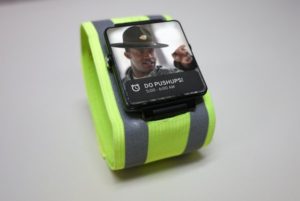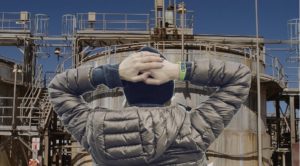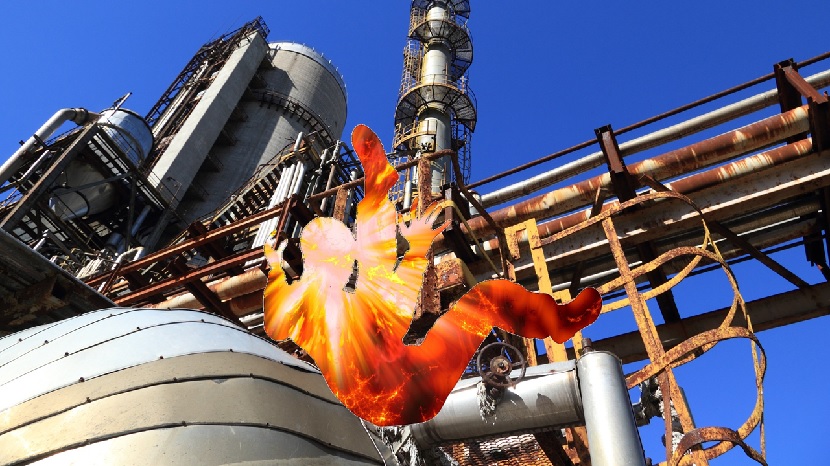“If knowledge can create problems, it is not through ignorance that we can solve them.” Isaac Asimov
We recently facilitated a Process Hazard Analysis (PHA) where the question came up, “What if there was a release and an operator was suddenly overcome? How would we know?”
The PHA team considered several possible safeguards: rounds, radio contact, personal gas monitors. If the operator were on rounds, it might be a half hour or more before anyone noticed that they weren’t back. Their radio would be of no use—they would be down and couldn’t report their own loss of consciousness. Personal gas monitors could help prevent someone from walking into a release but would be of no use at all to someone already caught in a release.
Someone mentioned a movie they had seen, a war movie, where every time the enemy disabled or killed a pilot, the icon for that pilot on central command’s screen went from green to red. They couldn’t remember though, whether the movie was set in the present or was a science fiction movie set in the future. “Wouldn’t it be cool, though, if we could monitor operators from the control room the way they did in that movie.”
It’s Not Science Fiction
In 2012, Dennis Wood wrote about monitoring the physical condition of firefighters while responding to fires. An assistant fire chief in Prince George’s County, Maryland, he noted that almost half of firefighter fatalities in the line of duty were from heart attacks. Some fire departments have already fielded physiological monitoring systems for monitoring emergency responders. Chief Wood described a system where first responders don garments worn under their fire gear that track body temperature, respiration, blood pressure, and heart rate. The system allows incident commanders to intervene for personnel in distress, “even if they do not yet know it, or deny it.”
Chief Wood describes three obstacles to widespread implementation: cost, staffing, and culture. Of the three, cost is likely to prove the easiest obstacle to overcome. As more departments adopt the technology, the cost will come down. That is the nature of technology. Staffing is different. He is convinced that use of this technology will require dedicated personnel to monitor the physical condition of responders, additional personnel that will have a cost.
The greatest obstacle, though, is not going to be the cost of implementation or the operating cost, but the culture of firefighting. Firefighting has standards of machismo that many firefighters are loathe to fail, which could lead to attempts to “subvert the system to avoid being reassigned or required to undergo medical care.”
Military Applications

Credit: Army.mil
Despite an April Fool’s report of the Army’s new Physical Training (PT) bracelet, military personnel rely on consumer products for fitness tracking. This led to the recent and widely-reported scandal about Strava showing fitness tracker use and unintentionally revealing the secret U.S. military facilities around the world.
In the April Fool’s piece, the Army reports that soldiers will wear the PT bracelets at all times, like their dog tags, and superiors will be able to monitor physical location and intake of foods and liquids, as well as other substances, in addition to monitoring activity level. The Army has also equipped the devices with an interface that allow superiors to provide immediate remote “mentoring” and proactive alerts to warn soldiers to stay out of “Off-Limits” establishments. It was not until the report said that not only will the PT bracelets tell commanders when their soldiers are drinking too much, but when they are drinking in the wrong places, that the piece reveals itself as a joke. It is not because the piece describes technology that is beyond reach.
Using Consumer Products
It is not a joke that consumer products can monitor the well-being of others in real time. Studies show the feasibility of using fitness trackers to monitor heart rates of hospital inpatients and to monitor patients after being discharged from intensive care units. These and other studies all conclude that wearable personal fitness trackers have the potential to improve health care delivery, both for inpatient care and outpatient care.
Applications include using photoplethysmography to detect heart rate and accelerometers to track activity and to evaluate sloop quality. The conclusion, always tentative and recommending more study, is that these consumer fitness trackers do an accurate and reliable job of monitoring the parameters they are set up to monitor.
Privacy Issues
As the technology develops and we learn what is possible, many express concern about whether it is good. The most common concerns are about privacy. Many companies already promote the use of fitness trackers as part of company wellness programs, and there is discussion in some quarters about making the wearing of fitness trackers a condition of employment.
Continuous corporate surveillance strikes many as dystopian on its face. There is a fear that employment and advancement opportunities may skew to those who are in better physical shape or give less evidence that stress or fatigue affects them physiologically, regardless of how well they cope in the workplace. Already, attorneys are reminding employers of employment law implications in terms of data capture, monitoring, retention, use, and security, as well as individual consent and privacy.

More Than Just a New App
The issue here, though, is not about monitoring and controlling the lifestyle of an employee. The issue is one of knowing when an unaccompanied operator in the field has suffered an injury or illness that renders them unable to call for help. In those situations, privacy is not a concern.
There are technical issues that developers must still work out. In a speech at the Wearable Technology Show, Blain Tookey of BP described the three hurdles fitness trackers must overcome to be useful in the oil and gas industry:
Electrical safety – Any electronic device, fitness tracker or other, must by certified as intrinsically safe. It is no good for a device to alert the control room that an operator is down if in the process it sets off a vapor cloud explosion.
Connectivity – The wireless technology used in plants may not be the same as the Wi-Fi technology built into personal fitness trackers. But if the control room doesn’t get the alert that an operator is down, it cannot respond.
Durability – Working environments are harsh. Temperatures can be extremely cold (consider winter in the shale oil fields of Saskatchewan) or extremely hot (the refineries of the Middle East), as well as dusty or corrosive.
Except in facilities that do not pose these issues, the hurdle to development is likely not one of simply developing a new app for an existing device. Instead, it may require developing a new device.
Adopting This Technology
The consumer products for measuring heart rates and activity with wearable devices already exist and are sufficiently reliable to detect when an operator is in distress. The technology for monitoring these condition from a remote location, like a control room, also exists. For those facilities that do not need to clear the hurdles of electrical safety, connectivity, and durability, there is already a means to monitor the well-being of an operator while they are in the field.
For those facilities where the very real hurdles of electrical safety, connectivity, and durability remain, follow Tookey’s lead. Let developers of wearable products that this is something you want. The makers of consumer products respond to the market.
